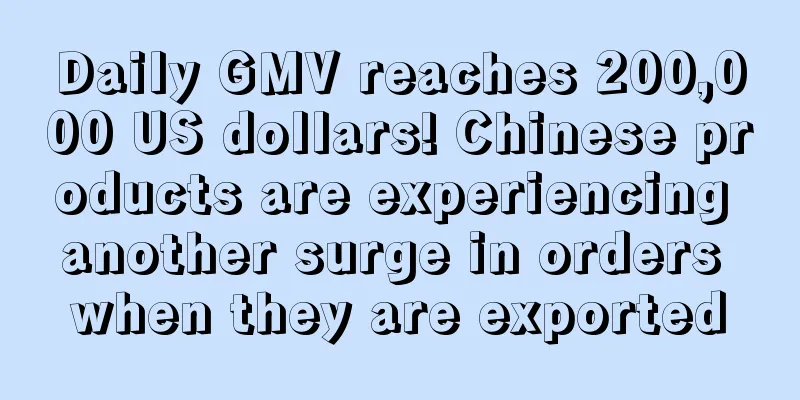Chinese e-commerce platforms are seizing this trillion-dollar market!

|
"Cross-border e-commerce is not a trend for the next three to five years, but a trend for the next thirty to fifty years." The value of this sentence continues to rise. With the rapid development of the cross-border e-commerce industry, the e-commerce potential in Europe, America, Southeast Asia, Latin America, India and other markets has exploded, bringing many new opportunities to Chinese e-commerce platforms and sellers from all walks of life. Among them, the Dutch market in northwestern Europe has performed particularly well in recent times, which has attracted many cross-border e-commerce platforms to compete for market share.
The e-commerce market will reach more than 200 billion
As the maritime hegemon in the 17th century, the Netherlands is known as the "Coachman of the Sea". Its GDP ranks among the top in Europe and it is one of the most developed countries in Europe. Of course, the Netherlands not only occupies a place in traditional trade, but in recent years, its e-commerce market has also shown great growth potential.
According to a report released by Thuiswinkel, the Dutch e-commerce association , online sales in the Netherlands increased by 3% year-on-year to 34.7 billion euros (about 263.5 billion yuan) in 2023, and the number of online purchases also rose to 365 million. Compared with the previous year, local consumers' online shopping expenditures increased by 10%, and online cross-border expenditures increased by 13% to 4 billion euros.
Data shows that the e-commerce market in the Netherlands will be worth about 25 billion euros (about 195 billion yuan) in 2023 and is expected to continue to grow in the coming years. The compound annual growth rate of the market will reach 5.3% between 2023 and 2027, and the e-commerce market size is expected to reach about 28 billion euros (about 218.4 billion yuan) in 2027.
As the e-commerce market continues to heat up, the number of online stores in the Netherlands continues to rise. According to the report, the number of online stores in the market has exceeded 100,000, an increase of 14% compared with the same period last year. Thanks to this, the number of e-commerce practitioners is also growing rapidly. Data shows that between 2014 and 2024, the number of small and medium-sized online sellers in the region has increased by 252%.
It can be seen that the development speed of the Dutch e-commerce market is quite rapid. At present, it has become the fifth largest e-commerce market in Europe.
Backed by strong growth potential, many platforms have come to layout this market and strive for market share. Among them, Chinese e-commerce platforms such as Temu and Shein have attracted a large number of Dutch consumers.
More than half of Dutch people shop on Chinese e-commerce platforms
Platform data shows that Shein and Temu are very popular throughout Europe, with 126 million and 97 million monthly active users respectively. In the Dutch market, Shein has 5.8 million users and Temu has 4.6 million users. It can be said that these two platforms have successfully established a reputation in the region with their advantages such as diverse product categories and low prices.
Recently, a survey by the Dutch market research organization Markteffect also revealed that Dutch consumers highly favor Chinese e-commerce platforms and their products.
The agency conducted a survey of 1,022 Dutch consumers aged 18 and above, and the results showed that more than half of them frequently use Chinese cross-border platforms to purchase goods on a daily basis, such as Temu, Shein and AliExpress.
Specifically, 11% of consumers shop on these platforms once every six months, 10% shop once or more per month, 9% shop once a quarter, 3% shop at least once a week, and a very small number shop several times a week.
Among them, 70% of the respondents said that the reason for choosing such platforms was the low prices of products, 47% of the respondents believed that the product variety was rich and the choices were wide, 34% said that these platforms were easy to use and had fast delivery, and 12% said that it was easier to buy modern and fashionable products on Chinese platforms.
In addition, the survey also analyzed the types of goods that consumers like. Among them, clothing was the most popular, accounting for 52% of purchases, followed by accessories such as jewelry, luggage, etc., accounting for 46%, and household items also accounted for a good proportion of purchases, reaching 33%.
It is worth mentioning that since Temu launched its Dutch site last year, its market share has gradually increased over the past year and has now exceeded 15%. In addition, since April this year, Temu has also launched a local-to-local consignment model in the EU, specifically targeting sellers with overseas warehousing and distribution capabilities. In other words, in addition to Chinese sellers, local sellers in various EU markets can also sell products on the platform. This model provides international sellers with more opportunities for explosive orders and further improves the market acceptance of the platform.
Recently, there was news that Temu has officially accepted the first batch of local Dutch entrepreneurs to join the platform. They can quickly register and start selling products through the Temu Seller Center. They can also use the platform to immediately sell their products to other European markets such as Belgium, Germany, France, Italy and Spain.
Chinese e-commerce platforms represented by Temu have diverted a large number of Dutch consumers' shopping attention by relying on low-priced and diverse products. Not only that, they continue to innovate models to attract local sellers, which has undoubtedly set off a fierce competition for local platforms.
Under the impact of "low prices", local platforms are having a hard time
In this regard, Peter van der Hel, chief analyst at Dutch business consulting firm Emerce, once pointed out that platforms such as Temu bring not only low-price competition, but also a comprehensive challenge to data-driven and supply chain efficiency, which can be called "a revolution in business models."
Under the impact of low prices from Chinese e-commerce platforms such as Temu, Bol.com, known as the "Benelux version of Amazon", is facing unprecedented pressure. It has to consider changing its operating model and adopting innovative strategies to consolidate its market position.
For example, in order to enhance the competitiveness of the platform, Bol.com launched a strategic transformation plan code-named "Phoenix", forcing the platform to fully launch the 1P (First-Party) supplier model. Simply put, it means that suppliers purchase directly, reducing the number of middlemen and thus reducing procurement costs.
Bol.com has also launched a membership program similar to Amazon, providing priority delivery, exclusive discounts and other services, with the aim of attracting and retaining local consumers.
In addition, there are platforms such as Coolblue, Marktplaats, Albert Heijn, Marktplaats, etc., which are constantly improving their logistics and distribution systems, launching various promotional activities, discount seasons and limited-time sales, etc., in the context of Chinese e-commerce platforms such as Temu seizing market share, striving to increase their own competitiveness.
However, although Chinese platforms such as Temu have a significant price advantage, local Dutch platforms have developed for many years and have sufficient brand awareness, logistics efficiency, and localized experience. Therefore, new platforms may still have a long way to go if they want to surpass old platforms, and old platforms can still compete for market share through services and strategies that keep up with the times.
In general, the potential of the Dutch e-commerce market will continue to explode in the future, and Chinese e-commerce platforms will continue to seize market share. However, the e-commerce competition landscape is often changing, with potential and risks coexisting. Both cross-border e-commerce platforms and local platforms must standardize operations and adjust strategies in a timely manner in order to gain a foothold in the market. |
Recommend
Shipping costs have stopped falling and rebounded. Will US ports be congested again?
Since the beginning of the year, shipping costs h...
What is Joom
Joom is a well-known mobile e-commerce platform in...
What is GraysOnline? GraysOnline Review, Features
GraysOnline is Australasia's largest industri...
To make matters worse? The International Chamber of Shipping proposes to increase taxes on ships!
Since the outbreak of the epidemic last year, the...
Are Amazon's "reviews" going to disappear?
According to foreign media reports, Amazon is con...
Is the "world factory" heading southeast? This report from Alibaba Research Institute tells you the truth with numbers
Will Vietnam and other Southeast Asian countries ...
What is HalstonHeritage? HalstonHeritage Review, Features
Halston Heritage is a creator of American luxury f...
What is Back Market? Back Market Review, Features
Backmarket is an online platform for selling refu...
Beauty e-commerce platform Feelunique's sales exceed £100 million and its business has spread all over the world
According to foreign media reports, recently, Bri...
The bell is about to ring, and another big seller is on the market!
After big sellers such as Zhiou Home Furnishing a...
South Korea's e-commerce market to reach $325 billion by 2025
According to data research firm ResearchAndMarket...
Unicorn Smasher
Unicorn Smasher is a free Chrome extension that c...
Telegram surpassed TikTok in January downloads to top the list, with 24% of downloads coming from India
According to Sensor Tower , a mobile application ...
Canadian e-commerce sales to reach nearly $80 billion by 2022
eMarketer expects Canadian e-commerce growth to c...
Tmall Double 11 merchant registration begins! A series of fee and interest rate reduction measures are launched
Good news! During the Double 11 preparation perio...









